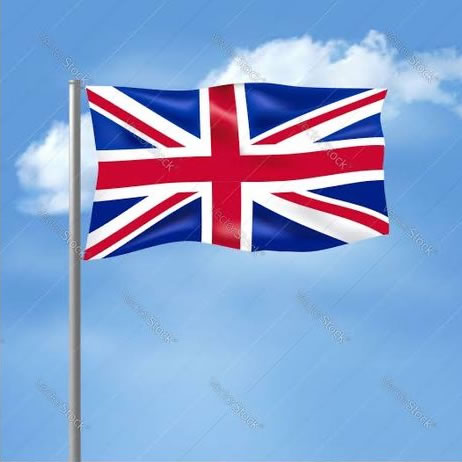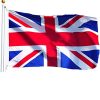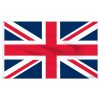Description
The Union Jack: Symbolism and Heritage
The United Kingdom Flag, popularly known as the Union Jack, has a rich history that intertwines England, Scotland, and Wales. Here’s what makes this iconic flag so significant:
Design and Origins
- The Crosses:
- The Union Jack combines the Crosses of St. George (for England), St. Andrew (for Scotland), and St. Patrick (for Ireland).
- Initially, it was called a “jack” only when flown at the bowsprit of British naval vessels. However, by the late 17th century, it became commonly known as the Union Jack.
- Early Banners:
- To understand the Union Flag’s design, we must delve into the early banners of England and Scotland.
- During its first 101 years, the flag was restricted to naval use because England and Scotland remained separate countries.
- The Acts of Union 1707 officially united England and Scotland as the state of Great Britain, making the flag the official banner on land.
- Incorporating Ireland:
- The current version of the Union Flag emerged from the Acts of Union 1800, which united Great Britain and Ireland.
- On January 1, 1801, the red saltire of St. Patrick (Ireland’s patron saint) was added, reflecting the “United Kingdom.”
- Although Ireland later gained independence, the St. Patrick’s Cross remained to represent Northern Ireland, which chose to remain part of the UK.
Product Details
- Size: Available in 3×5 feet dimensions.
- Materials:
- Satin: Ideal for indoor displays, ceremonies, and events.
- Polyester: Durable for outdoor use, withstanding the elements.
Facts about the Union Jack
- The Union Jack is arguably one of the most recognizable flags globally, with roots dating back to the Middle Ages.
- It symbolizes unity, history, and the enduring connection between England, Scotland, and Wales.
- While naval use initially defined it, it later became the official banner of military and government on land.
Order Your UK Flag Today
If you need the United Kingdom flag anywhere in Nigeria, feel free to reach out to us at Eloquent Displays & Decor
Facts about the United Kingdom Flag
The flag of the United Kingdom, commonly known as the Union Jack or Union Flag, is arguably one of the most recognizable flags in the world. And while the first Union Flag appeared in 1603, its roots go back far into the Middle Ages, making it one of the world’s most historic flags.
To understand the design of the Union Flag, you must first understand the early banners of England and Scotland.
The Union Flag was restricted to only naval use during its first 101 years in existence since England and Scotland were still separate countries. It wasn’t until the Acts of Union 1707 when England and Scotland joined together as the state of Great Britain that the flag became the official banner of military and government on land.
The current version of the Union Flag was created by the Acts of Union 1800 that united Great Britain and Ireland. The red saltire of St. Patrick, Ireland’s patron saint, was added on January 1, 1801, reflecting the addition of Ireland in a “United Kingdom.” Though Ireland would gain independence in 1921, the St. Patrick’s Cross remained to represent Northern Ireland, which separated from Ireland to remain a part of the United Kingdom.












